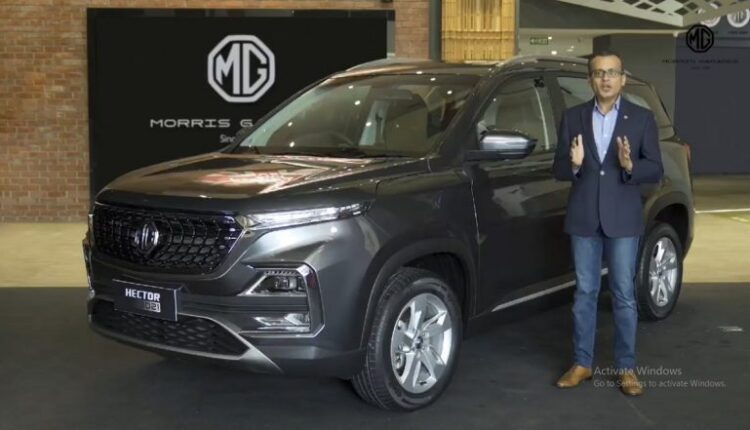New Delhi, Aug 22: MG Motor India is investing Rs 2,500 crore by the end of next year to increase the production capacity at its Halol plant in Gujarat, as it gears up to launch its mid-size SUV Astor, according to a top company official.
Despite the worsening semiconductor shortage situation, which is likely to continue for at least another six months, the company expects its sales this year to grow by up to 100 per cent over last year.
Also Read | Petrol and Diesel Prices in India Marginally Reduced on August 22, 2021; Check Fuel Rates in Delhi, Mumbai and Other Metro Cities.
“We have done an investment of Rs 3,000 crore already, and by the end of next year, we will do another Rs 2,500 crore. We will reach a total of Rs 5,500 crore,” MG Motor India President and Managing Director Rajeev Chaba told PTI. MG Astor Mid-Size SUV Unveiled, To Get Level 2 ADAS & In-Car AI Personal Assistance.
The investment will be for adding further capacity as the company prepares to meet demand of new models, including the mid-size SUV Astor, which is expected to hit the market around Diwali.
Also Read | Take Your Social Media to 6-7 Figures per Year With Alan Beck.
“Hopefully by quarter one next year, depending on materials supplies, we will start producing 7,000 units a month,” he said, adding the company’s current capacity is around 4,000-4,500 units a month.
At present, Chaba said the shortage of materials supply, especially that of semiconductors, has constrained production.
“Right now, with the kind of work crew and workforce we have, we can do 4,000-4,500 cars a month but unfortunately because of material shortages, 3,500 to 4,000 units a month is the real availability of the current portfolio,” he said.
While the company can even produce up to 5,000 units a month had it not been for the supply constraints, he said, “When we add Aster to it (the product portfolio), we will (have to) increase the capacity.”
In 2018, the company had announced plans to invest Rs 5,000 crore over a period of five to six years, with its Halol plant envisaged to have an annual production capacity of 80,000 to 1 lakh units in first phase and take it up to over 2 lakh units in the second phase.
On the semiconductor shortage issue, Chaba said, “It has deteriorated, it has gone worse. We were expecting it will improve… In my opinion, unfortunately it will continue for at least another six months.”
Elaborating further he said due to the coronavirus pandemic there has been a spike in demand for semiconductors from almost every industry, including gaming, smart gadgets, laptops and mobile phones.
While the automotive industry accounts for only 10 per cent of semiconductor demand, 90 per cent goes into non-auto industry, he added.
As fabrication units for chips have a long gestation period, he said additional capacities will get added only next year, “because people who have taken the decision, let’s say seven, eight months back, those factories will be up and running only next year”.
Another factor that’s hampering the supply chain, Chaba said, is “the logistics industry or the shipping industry where the situation has deteriorated a lot” due to freight capacity constraints.
When asked about the sales outlook for 2021, Chaba said, “sales are definitely improving over last year because last year a few months like March, April and May were a washout but there has not been a washout this year.”
As an industry, he said, “we will expect 20 per cent growth over last year in 2021. As far as MG is concerned, we should do much more. We are targeting anywhere from 75 per cent to 100 per cent over last year despite the semiconductor shortage.”
In 2020, MG Motor India had sold a total of 28,162 units, which included 25,834 units of Hector SUV, 1,243 units of ZS EV and 1,085 units of premium SUV Gloster.
(This is an unedited and auto-generated story from Syndicated News feed, LatestLY Staff may not have modified or edited the content body)


